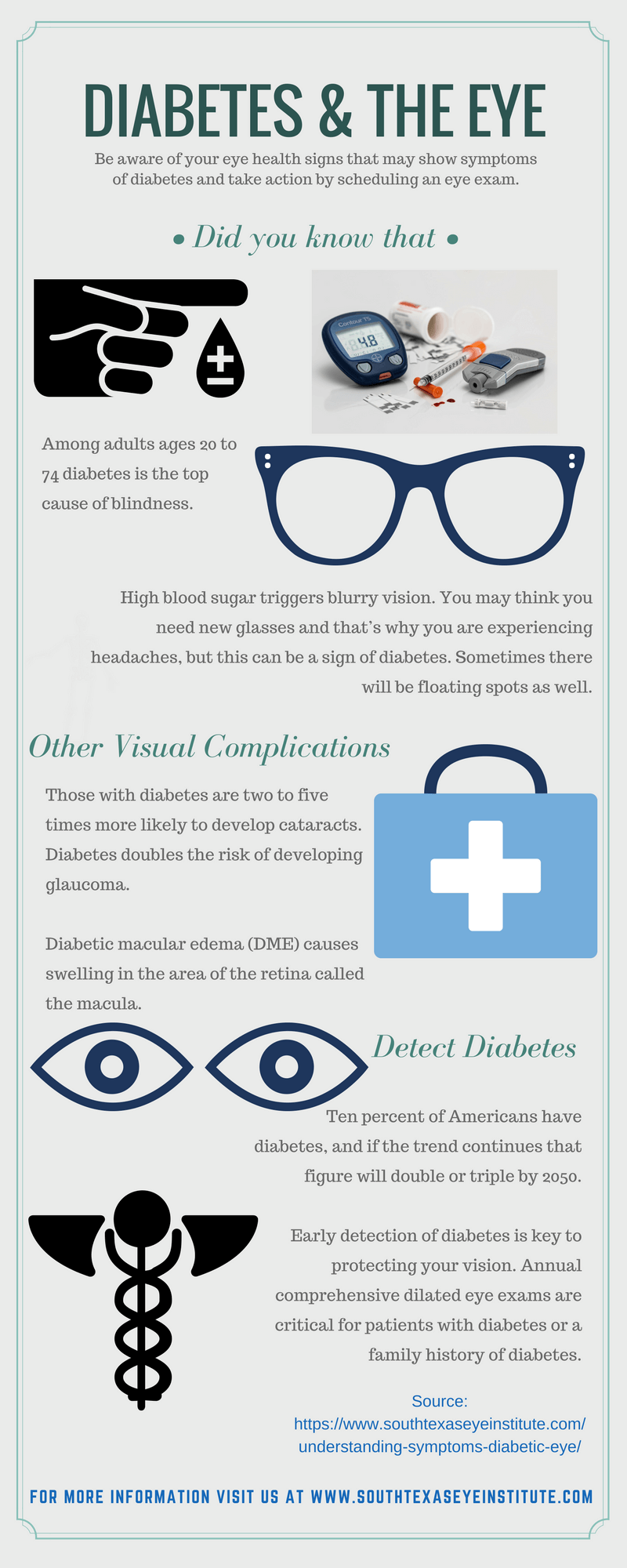Diabetes is the seventh leading cause of death in the US. Once you are diagnosed, dealing with diabetes becomes a lifelong task. It can cause multiple issues, and not only with your vision. If you or someone you know has diabetes, or if you suspect you might have diabetes, keep reading.
It is essential to not only know what the symptoms are, but also understand why diabetes affects the eyes in particular.
Learn more about your eye health that can detect symptoms of disease like diabetes by reading the infographic below:

Some Basics
Among adults ages 20 to 74 diabetes is the top cause of blindness. It is a leading cause of kidney failure, increased risk of high blood pressure, heart disease and stroke. Ten per cent of Americans have diabetes, and if the trend continues that figure will double or triple by 2050.
The main characteristic of diabetes is high blood sugar or glucose. When we eat, our bodies absorb foods and separates carbohydrates, turning them into glucose. When this occurs, the pancreas releases insulin, which in turn moves through our blood and into our cells. Without insulin our bodies cannot function properly. With type two diabetes the pancreas does not produce enough insulin.
Our Eyes
High blood sugar triggers blurry vision. We may think we need new glasses and that’s why we are experiencing headaches, but this can be a sign of diabetes. Sometimes there will be floating spots.
You should check with an eye specialist to determine the exact problem. The doctors at South Texas Eye Institute are expertly trained to diagnose and treat issues with diabetes.
One such serious issue is diabetic retinopathy. Diabetes causes the blood vessels in our eyes to become weak. As time passes these vessels can leak fluid. As the disease progresses, new abnormal vessels form, which are even weaker, triggering further leaks.
In time, your vision will become hazy and blurred. If left untreated the retina can pull away from the eye, causing blindness.
High levels of glucose can also make eyes extremely dry.
Other Visual Complications
- Those with diabetes are two to five times more likely to develop cataracts.
- Diabetes doubles the risk of developing glaucoma.
- Diabetic macular edema (DME) causes swelling in the area of the retina called the macula.
Early detection of diabetes is key to protecting your vision. Annual comprehensive dilated eye exams are critical for patients with diabetes or a family history of diabetes.
Exercise, proper diet and weight control all are essential tools to combat diabetes.
Visit South Texas Eye Institute to schedule an appointment
if you suspect you may have diabetes.

